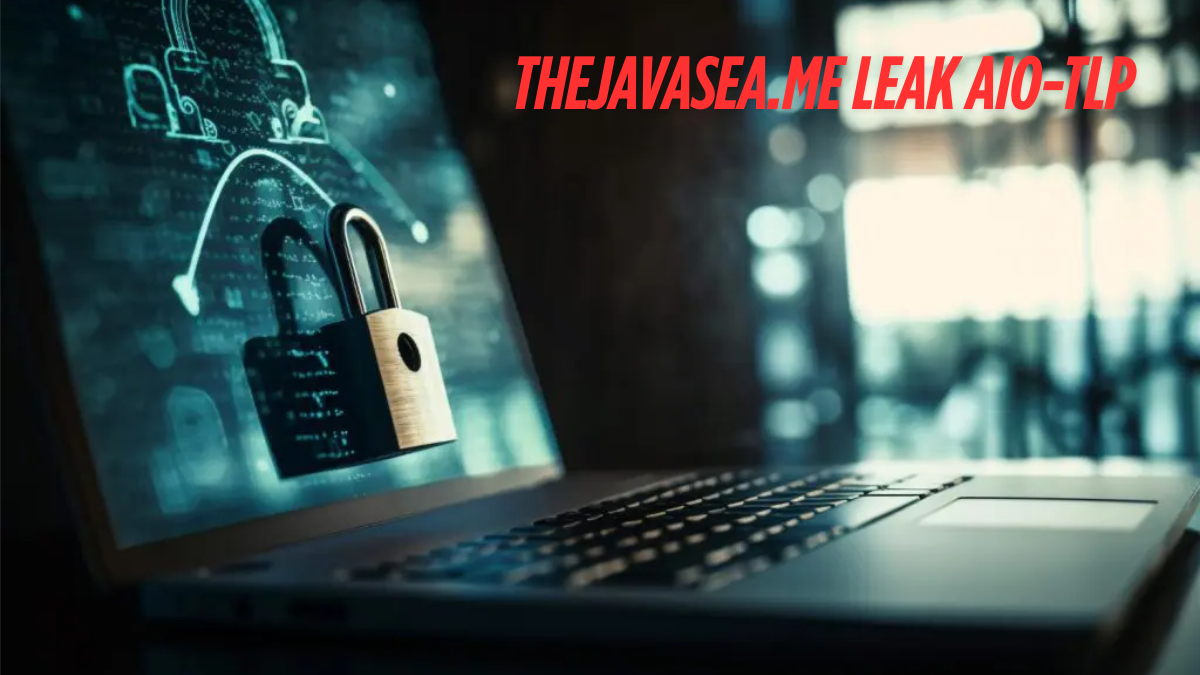Discover how TheJavaSea.Me’s AIO-TLP leak impacted international cybersecurity measures, exposing vulnerabilities worldwide.
Introduction
In cutting-edge interconnected international, cybersecurity is greater crucial than ever. Yet, cyber threats preserve to conform quicker than many systems can adapt. The latest revelation of the AIO-TLP leak through TheJavaSea.Me has left the cybersecurity community in a whirlwind of situation. This breach didn’t just effect some—it despatched shockwaves across the globe, exposing gaping holes in what we believed to be robust safety features. The state of affairs is a warning call for organizations, governments, and normal internet users alike.
Overview of TheJavaSea.Me and AIO-TLP Leak
In today’s digital age, the world regularly finds itself grappling with cybersecurity threats from surprising quarters. One such alarming incident is the AIO-TLP leak, which has sent shockwaves via the worldwide cybersecurity community. At the center of all of it is TheJavaSea.Me, a name that, till lately, may not were on absolutely everyone’s radar.
Background on TheJavaSea.Me
Before we dive into the infamous AIO-TLP leak, it’s crucial to recognize what TheJavaSea.Me is and how it became a pivotal participant on this unfolding cybersecurity narrative. TheJavaSea.Me is an internet platform that initially provided itself as a network-pushed supply for progressive tech solutions and software program equipment. Enthusiasts from around the world frequently visited the website online for its wealthy repository of programming tutorials, ingenious code snippets, and rising tech trends.
However, under this apparently risk free look, TheJavaSea.Me have become a burgeoning hub for greater than simply tech lovers changing ideas. As its popularity grew, so did the sports on its forums, some of which skirted the bounds of legality. Eyes turned in the direction of TheJavaSea.Me for continually seemingly being a step ahead of the virtual curve—not simply in improvements however additionally within the techniques of bypassing traditional cybersecurity walls.
Details of the AIO-TLP Leak
Fast ahead to the prevailing drama surrounding the AIO-TLP leak—a fiasco that has riddled cybersecurity experts and laypeople alike. AIO-TLP, status for “All-In-One Threat Level Protocols,” turned into a pinnacle-tier, sensitive database containing globally used cybersecurity hazard stages and protocols. This database turned into supposed to be available only to vetted safety professionals international, offering a at the back of-the-scenes study the strategies being put in vicinity to fight digital threats.
The leak concerned the unauthorized release of those protocols, placing infinite systems at chance. The leaked records included intricate information of protection vulnerabilities, recognized patched loopholes, or even unpatched weaknesses in various networks and systems.
Initial Discovery and Response
The preliminary discovery of the AIO-TLP leak was as unintentional as it changed into unsettling. A protection researcher, even as casually surfing thru the forums on TheJavaSea.Me, stumbled upon what regarded like classified documents showcasing the AIO-TLP protocols. Immediately recognizing the severity, the researcher alerted international cybersecurity bodies. The recognition that such sensitive statistics turned into freely floating round at the internet despatched experts into a frenzy.
In response, an international task force was quickly assembled to assess the damage and trace the leak’s origins. There turned into a dizzying array of demanding situations: halting the unfold of the information, know-how how deeply the protocols have been compromised, and, crucially, figuring out the hyperlink again to TheJavaSea.Me.
Impact on Global Cybersecurity
The AIO-TLP leak isn’t always just a story of data spillover; it is a breach with huge-accomplishing outcomes that have impacted international cybersecurity measures.
Vulnerabilities Exposed
The instant fallout of the leak changed into the significant publicity of vulnerabilities located within worldwide structures. The AIO-TLP database contained a catalog of vulnerable points, some of which were nonetheless anticipating patches. With this facts now out within the open, malicious actors observed themselves with a map leading straight to capability digital goldmines.
Organizations international scrambled to pick out ability breaches and bolster their defenses towards new threats lurking within the shadows. From banking establishments to government companies, no quarter appeared proof against the encroaching risks. For many, it become a rude awakening that underscored just how fragile their security features were towards cybercriminals armed with insider expertise.
Reactions from Security Experts
The information of the AIO-TLP leak sparked a wide range of reactions from protection professionals and cybersecurity firms. While some expressed disbelief at the audacious breach, others were more worried about the results for trust and transparency in the cybersecurity community.
Many professionals emphasised the importance of cooperation and facts sharing to mitigate the risks posed by way of the leak. Cybersecurity forums and meetings buzzed with discussions on how to secure structures promptly and reevaluate the techniques that were compromised. Collaborative efforts saw professionals from unique components of the arena working collectively, specializing in damage manipulate and gaining knowledge of from the incident to avoid similar occurrences inside the destiny.
However, there has been additionally a sense of frustration over the lack of proactive measures that would have preemptively curbed the sort of giant leak. Calls for newer, more strong protection protocols echoed for the duration of the enterprise, urging companies to invest in current technological defenses and team of workers schooling.
Long-time period Implications for Cybersecurity Protocols
The AIO-TLP leak is greater than only a cybersecurity information tale—it’s a catalyst for exchange. The lengthy-time period implications stretch past instantaneous solutions and pressure a reevaluation of current cybersecurity protocols.

Re-assessment of Access and Permissions:
One of the primary responses to prevent destiny leaks entails tightening the reins on who has get right of entry to to sensitive information. Organizations are predicted to notably revise their get right of entry to control measures, ensuring that simplest crucial personnel can interact with excessive-stage security statistics.
Technological Advancements:
With the obtrusive deficiencies in present day systems, cybersecurity companies are certain to pour resources into growing advanced threat detection and prevention technologies. Artificial intelligence and machine getting to know models are possibly to come to be critical allies in preventing capability breaches.
Strengthened Global Collaboration:
The international reaction to the leak highlighted the need of worldwide collaboration in cybersecurity efforts. Moving forward, international locations and groups will need to paintings even in the direction of share risk intelligence and coordinate responses to cyber threats.
Data Privacy Regulations:
As a result of the leak, there’ll likely be heightened scrutiny over statistics privateness standards, pressing governments and regulatory our bodies to set up extra stringent cybersecurity laws. This ought to consist of mandatory reporting of breaches and compliance with tighter records safety protocols.
Ultimately, at the same time as the AIO-TLP leak underscores a extensive failure in cybersecurity practices, it also gives an opportunity for mirrored image and evolution inside the enterprise. By getting to know from this breach, the worldwide network can higher put together for the dynamic and ever-evolving landscape of digital threats. This incident would possibly very well end up a benchmark case for destiny cybersecurity improvements, rallying experts worldwide to build greater resilient and secure structures for day after today.
Analysis of the Breach
The AIO-TLP leak orchestrated by TheJavaSea.Me has sent ripples across the cybersecurity community, forcing stakeholders to reconsider the safety mechanisms that guard sensitive records. Let’s dive deeper into what made this breach possible, the screw ups in cutting-edge safety features, and the essential classes we ought to all take to coronary heart.
Methods Used by means of Hackers
The hackers answerable for the AIO-TLP leak deployed a complicated combo of methods that eluded some of the most robust security systems. Here’s a more in-depth look at their strategies:
- Phishing Campaigns: It began with targeted phishing emails that have been designed to look valid. These emails lured individuals into clicking links that compromised their credentials.
- Exploits on Software Vulnerabilities: The perpetrators diagnosed weaknesses in old software to benefit unauthorized get admission to, leveraging 0-day vulnerabilities to penetrate the system.
- Advanced Persistent Threats (APTs): They maintained non-stop, stealthy access over an prolonged period, which allowed them to acquire touchy facts without on the spot detection.
- Malware Deployment: Unique malware strains had been strategically introduced to systems, specializing in facts extraction and circumventing standard detection gear.
By weaving collectively those methods, the hackers succeeded in which many might fail, highlighting the significance of staying beforehand of evolving cyber threats.
Failures in Security Measures
Despite the advanced protection frameworks in area, numerous key failings had been exploited in the breach:
- Lack of Multi-Factor Authentication (MFA): Many affected systems depended on single-layer security, which become easily circumvented by means of compromised passwords.
- Delayed Software Updates: Slow implementation of protection patches left essential systems at risk of exploitation, allowing hackers to capitalize on known vulnerabilities.
- Weak User Training: The human detail stays a sizable vulnerability. Inadequate training left employees unwell-organized to recognize phishing attempts, facilitating unauthorized get entry to.
- Ineffective Monitoring and Response: The absence of actual-time tracking and a slow incident response compounded the hassle, allowing hackers to maintain access longer than important.
These gaps in the safety features served as inexperienced lighting for TheJavaSea.Me, pointing out how critical it is to close these loopholes to defend against destiny breaches.
Lessons Learned from the Incident
While the breach become a hard hit to global cybersecurity, it also served as a effective take-heed call, supplying invaluable training:
- Strengthened Authentication Procedures: Implementing MFA can protect in opposition to unauthorized access, despite compromised passwords.
- Regular and Timely Software Updates: Keeping systems updated cuts off clean get right of entry to routes for hackers and limits exploitation.
- Enhanced User Education: Regular education packages and simulations can empower personnel to pick out and report suspicious activities proactively.
- Proactive Monitoring Systems: Investing in AI-driven tracking gear can appreciably reduce detection instances, making it tougher for threats to head neglected.
- Comprehensive Incident Response Plans: Establish clean protocols for coping with breaches to ensure rapid containment and mitigation.
By addressing these key regions, businesses can’t best guard themselves from similar assaults but also make a contribution to a extra steady global digital landscape. Remember, cybersecurity is a shared obligation, and every leap forward is a step toward a more secure on line environment for absolutely everyone.
Conclusion
The AIO-TLP leak perpetrated via TheJavaSea.Me serves as a wake-up call to the worldwide cybersecurity network. It highlights the frailties in facts protection systems that many as soon as taken into consideration strong. As we technique the aftermath, it’s essential for corporations and governments to re-evaluate and make stronger their cybersecurity techniques. Remember, the movements we take nowadays will outline our digital safety within the years in advance. So permit’s commit to building a more stable cyber international, one code at a time.









